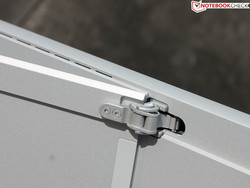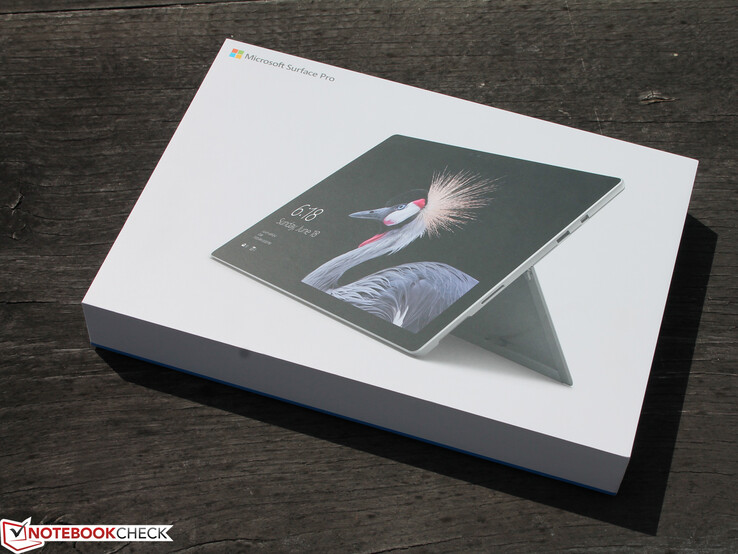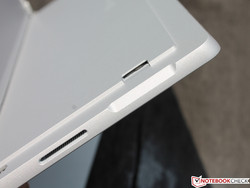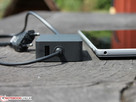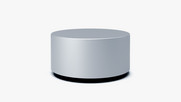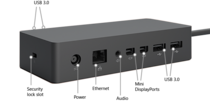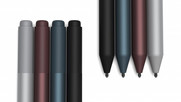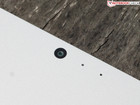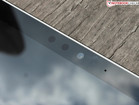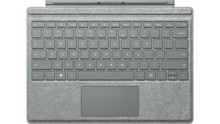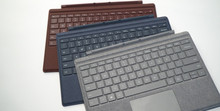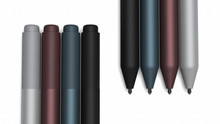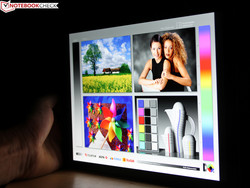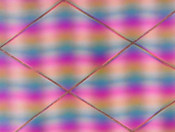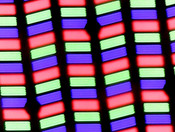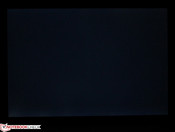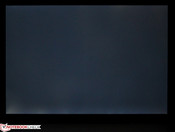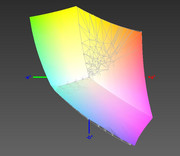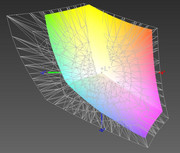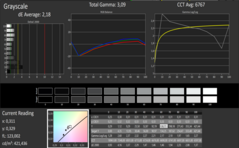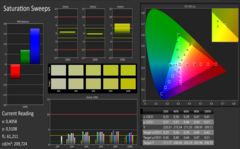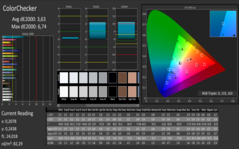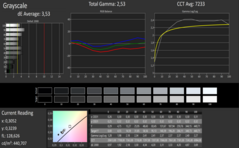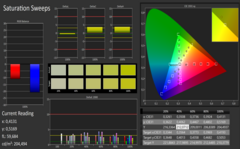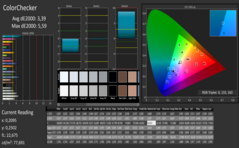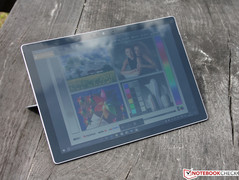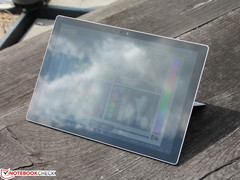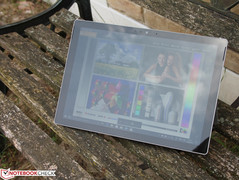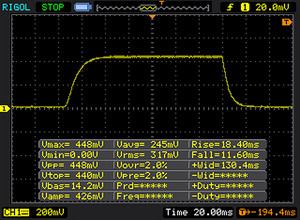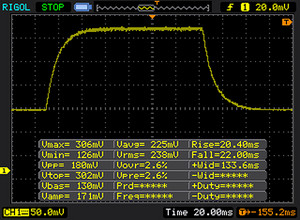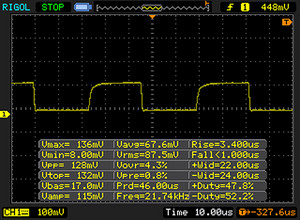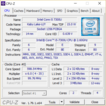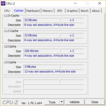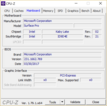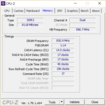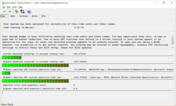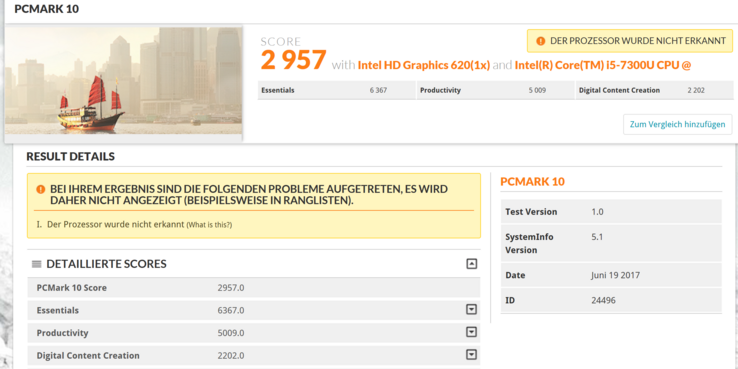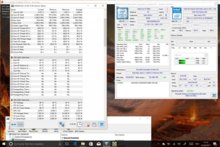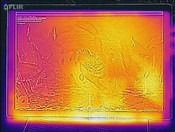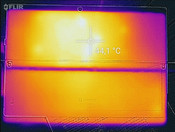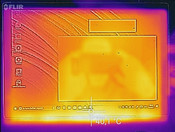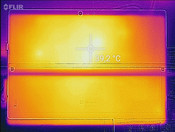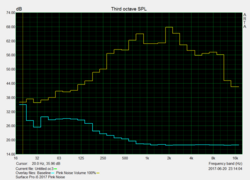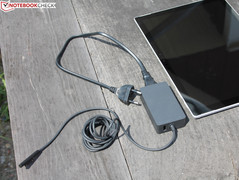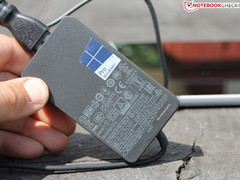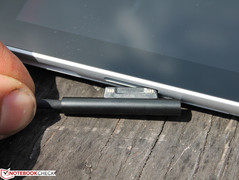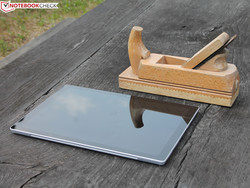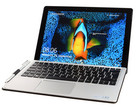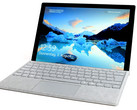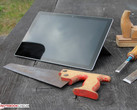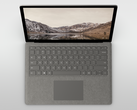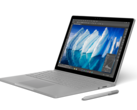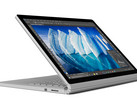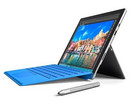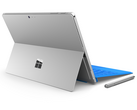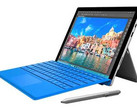Microsoft Surface Pro 2017 (i5-7300U, 256 GB) Convertible Review
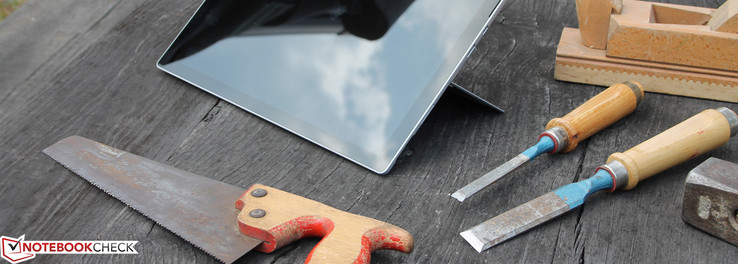
For the original German review, see here.
Haste makes waste. It took Microsoft almost two years to update its 2015 Surface Pro 4. And while its competitors have released a variety of Kaby Lake based devices in the meantime, Microsoft has remained suspiciously quiet.
And now it is finally here: the new Surface Pro 2017. For $1299, you will get the mid-range model equipped with a Core i5-7300U, 8 GB of RAM, and a 256 GB SSD. The Surface Pen or the Signature Type Cover is not included, and will cost you $100 and $130 extra, respectively. The additional USB 3.0 Dock is another $200.
Given that you can get an FHD Lenovo IdeaPad Miix 720-12IKB, including its backlit keyboard dock and stylus, for less than $1200, the Surface Pro seems overly expensive.
Competitors are widely available from various manufacturers, including:
- Dell Latitude 12 5285 2-in-1 (7300U, 256 GB, ~$1,500, 88%),
- Lenovo IdeaPad Miix 720-12IKB 1 (7200U, 256 GB, ~$1,300, 85%),
- Asus Transformer 3 Pro T303UA (6200U, 256 GB, ~$1,300, 86%),
- HP Elite x2 1012 G1 (m5-6Y54, 256 GB, ~$1,300, 87%),
- Lenovo ThinkPad X1 Tablet Gen 2 (i5-7Y54, 256 GB, ~$1,300, 86%),
- Toshiba Portégé Z20t-C-121 (m5-6Y57, 256 GB, ~$2,200, 85%).
The Dell Latitude 12 5285 will be the Surface Pro’s main competitor – it is similarly equipped and scored pretty high in our review. Acer's Aspire Switch Alpha 12 SA5-271-56HM, HP's Spectre x2 12-a001ng, and Samsung Galaxy Tab Pro S W700N are other rivals to look out for. For the sake of clarity, we have not included these last three in all comparisons and benchmark tables.
Also see our reviews of the Core m3 entry level version and the Core i7 model.
Case
The Surface’s build quality is outstanding. It is still made out of a single block of aluminum (aka a tray) that the display is installed into from the top. Rigidity is amongst the best that we have seen, and the tablet does not creak or warp at all.
Not much has been changed on the outside. The corners are rounded now, and the Surface Pro is less chiselled than before. It is also still framed by a fan vent.
Its kickstand can now be opened up to 170 degrees, which makes it perfect for being placed (almost) flat on a table. Gaps are consistent and small, and the manufacturer does not offer different color options. However, the type cover and pencil are available in a variety of different colors.
Its thickness of 8.5 mm (~0.335 in) means that compared to its predecessor, the Surface Pro 4 (Core i5, 8.4 mm/~0.331 in) it is now ever so slightly thicker. At 786 g (~1.7 lb) without, and 1092 g (~2.4 lb) with the keyboard dock, it is also slightly heavier than the Surface Pro 4 (1078 g/~2.37 lb). The difference is insignificant though. At 9.76 mm (~0.38 mm), its main competitor, the Dell Latitude 12 5285, is noticeably thicker.
Connectivity
Connectivity has remained unchanged: MiniDisplayPort, USB 3.0, Surface Connect, and microSD card slot – that is it. Pretty poor for 2017, and we ran into trouble right away trying to connect a USB mouse, a Bluetooth keyboard, and an external USB hard drive to the Surface Pro. The lack of Type Cover meant that we had to rifle through our peripherals looking for a USB 3.0 hub that we know had to be somewhere, but had not used and seen for a long time. We did find a USB Type-C hub, but that did not do us any good.
Obviously, this could be alleviated with the optional Surface Dock or a standard USB 3.0 hub. Nevertheless, it is quite disturbing when a device that the manufacturer wants to see at the very forefront of technological development lacks the basic port that more and more of its competitors are equipped with these days. Size certainly does not matter in this case.
Communication
As usual, the Wi-Fi chip is supplied by Marvell (Avastar Wireless-AC) and lacks support for Wireless Display. On the plus side, it is equipped with Bluetooth 4.1. A transfer speed of 577 MB/s when connected to our Linksys EA8500 reference router means it is one of the fastest devices in our test group.
Security
The Surface Pro is equipped with a TPM 2.0 module, which means that it can be both tracked and securely identified in business environments.
Accessories
No further accessories besides the charger and a quick start guide are included. Instead, Microsoft offers all of its Surface-specific accessories separately: Type Cover, Surface Pen, USB dock, and Dial. Bundles are available, and can help you save some money.
The Surface Pen has been updated by Microsoft, and in addition to the 4096 different pressure points it is now also capable of detecting inclination. Its buttons (one on the side, one at the top) are freely configurable, and can be used as an eraser, to launch OneNote, or to open Cortana. The pen’s tip is replaceable.
Cameras and Windows Hello
The Surface Pro’s 8 MP main rear-racing camera with autofocus takes decent yet far from perfect photos. Large uniform colored surfaces are noticeably washed-out, and there is some noise in all photos. While much better than a notebook’s webcam, it is definitely not state-of-the-art technology. Unsurprisingly, the secondary front-facing 5 MP camera is even worse, yet still sufficient for Skype calls.
Maintenance
There is no way to perform any sort of maintenance on the device whatsoever, and given its unibody design, you will not find a single screw on the entire tablet. The Latitude 12 5285 2-in-1 is much more maintenance-friendly – its PCIe NVMe-SSD, the Wi-Fi modem, and the fans are user-replaceable and serviceable.
Warranty
Microsoft’s standard limited hardware warranty has you covered for a year. An additional warranty extension for up to two years is available for $149. Please see our Guarantees, Return policies and Warranties FAQ for country-specific information.
Input Devices
Keyboard
Even though our review unit lacked Microsoft’s Type Cover, we had the opportunity to give the Signature Keyboard a try at the Surface Family Event in Berlin.
Its Alcantara surface looks like felt, but does not feel that way. And while it is soft, it can be wiped clean quite easily, which is very important for a keyboard, and thus understandable as to why Microsoft has chosen to forego the real Alcantara touch and feel.
The Signature Type Cover costs $30 more than the regular Type Cover, and can also be used with the older Surface Pro 3 and 4 tablets.
Its keys have medium travel and a very nice actuation point. Overall, touch and feel have remained unchanged. It is still one of the best type cover keyboards on the market. Its keys are still not concave but completely flat.
The keyboard connects to the Surface Pro’s docking port at the bottom of the tablet, and can be attached at two different angles: either flat or at an angle of 10 degrees. The latter position does result in slight flexing and teetering. The keyboard has an adjustable backlight.
According to Microsoft, the keys are spaced further apart now. We were unable to compare the new keyboard directly to its predecessor, but had no problems even with our large man hands. The sounds it makes while typing are rather dull and unobtrusive.
Touchpad
The Alcantara Type Cover’s touchpad is the same size as the regular Type Cover’s touchpad. It can be used just as comfortably as the predecessor’s. Its integrated buttons have rather shallow travel, a well-defined actuation point, and very pronounced feedback. Drag & drop worked without any problems.
Display
The 12.3-inch PixelSense display has a resolution of 2736x1824 (267 PPI). Its aspect ratio is 3:2. Touch input is 10-point multitouch. Up to ten input points can be detected simultaneously.
External displays can be connected via MiniDisplayPort. The Surface Pro supports up to two external displays via daisy-chaining. Maximum external resolution per display is 3840x2160 (4k).
The contrast ratio of 1438:1 is the best of its class. It was measured at a high 401 nits. At 500 nits, the Dell Latitude 12 5285 is brighter.
We found PWM flickering at a very high and thus unnoticeable frequency of 21000 Hz.
| |||||||||||||||||||||||||
Brightness Distribution: 88 %
Center on Battery: 417 cd/m²
Contrast: 1438:1 (Black: 0.29 cd/m²)
ΔE ColorChecker Calman: 3.63 | ∀{0.5-29.43 Ø4.77}
ΔE Greyscale Calman: 2.18 | ∀{0.09-98 Ø5}
99% sRGB (Argyll 1.6.3 3D)
63% AdobeRGB 1998 (Argyll 1.6.3 3D)
69.1% AdobeRGB 1998 (Argyll 3D)
99% sRGB (Argyll 3D)
67.6% Display P3 (Argyll 3D)
Gamma: 3.09
CCT: 6767 K
| Microsoft Surface Pro (2017) i5 LG Display LP123WQ112604, , 2736x1824, 12.3" | Microsoft Surface Pro 4, Core i5, 128GB Samsung 123YL01-001 ID: SDC3853, , 2736x1824, 12.3" | Lenovo Ideapad Miix 720-12IKB AUO B120YAN01 / AUO106F, , 2880x1920, 12" | Lenovo ThinkPad X1 Tablet Gen 2 LSN120QL01L01, , 2160x1440, 12" | Asus Transformer 3 Pro T303UA-GN050T BOE BOE06AC (NV126A1M-N51), , 2880x1920, 12.6" | Toshiba Portege Z20t-C-121 Toshiba TOS508F, , 1920x1080, 12.5" | Dell Latitude 12 5285 2-in-1 BOE06DC, , 1920x1280, 12.3" | HP Elite x2 1012 G1 LG Philips, , 1920x1280, 12.1" | |
|---|---|---|---|---|---|---|---|---|
| Display | -3% | -5% | 13% | -36% | -6% | -23% | ||
| Display P3 Coverage (%) | 67.6 | 65 -4% | 65.2 -4% | 81.8 21% | 42.51 -37% | 62.8 -7% | 53.8 -20% | |
| sRGB Coverage (%) | 99 | 96.5 -3% | 91 -8% | 98.3 -1% | 63.7 -36% | 94 -5% | 73.7 -26% | |
| AdobeRGB 1998 Coverage (%) | 69.1 | 67 -3% | 66.1 -4% | 82.2 19% | 43.95 -36% | 64.7 -6% | 53.8 -22% | |
| Response Times | -9% | 5% | 27% | 15% | -35% | -4% | 21% | |
| Response Time Grey 50% / Grey 80% * (ms) | 42 ? | 46 ? -10% | 45 ? -7% | 28.4 ? 32% | 30 ? 29% | 61 ? -45% | 42.4 ? -1% | 33.2 ? 21% |
| Response Time Black / White * (ms) | 29 ? | 31.2 ? -8% | 24 ? 17% | 22.8 ? 21% | 29 ? -0% | 36 ? -24% | 30.8 ? -6% | 22.8 ? 21% |
| PWM Frequency (Hz) | 21000 | 50 ? | 221.2 ? | 200 ? | 210.1 ? | |||
| Screen | -13% | -33% | -35% | -23% | -82% | -20% | -48% | |
| Brightness middle (cd/m²) | 417 | 413 -1% | 406 -3% | 388.1 -7% | 316 -24% | 354 -15% | 523.2 25% | 322 -23% |
| Brightness (cd/m²) | 401 | 396 -1% | 396 -1% | 344 -14% | 307 -23% | 330 -18% | 522 30% | 319 -20% |
| Brightness Distribution (%) | 88 | 87 -1% | 88 0% | 78 -11% | 91 3% | 86 -2% | 88 0% | 97 10% |
| Black Level * (cd/m²) | 0.29 | 0.36 -24% | 0.3 -3% | 0.39 -34% | 0.29 -0% | 0.63 -117% | 0.42 -45% | 0.42 -45% |
| Contrast (:1) | 1438 | 1147 -20% | 1353 -6% | 995 -31% | 1090 -24% | 562 -61% | 1246 -13% | 767 -47% |
| Colorchecker dE 2000 * | 3.63 | 3.09 15% | 5.28 -45% | 4.6 -27% | 3.91 -8% | 8.28 -128% | 4 -10% | 6.02 -66% |
| Colorchecker dE 2000 max. * | 6.74 | 9.83 -46% | 9.1 -35% | 7.9 -17% | 12.71 -89% | 8.6 -28% | 10.06 -49% | |
| Greyscale dE 2000 * | 2.18 | 3.92 -80% | 6.71 -208% | 6.1 -180% | 5.37 -146% | 9.15 -320% | 5.5 -152% | 6.29 -189% |
| Gamma | 3.09 71% | 2.3 96% | 2.29 96% | 2.07 106% | 2.36 93% | 2.73 81% | 2.16 102% | 2.4 92% |
| CCT | 6767 96% | 7333 89% | 6532 100% | 7104 91% | 7812 83% | 5953 109% | 7546 86% | 7712 84% |
| Color Space (Percent of AdobeRGB 1998) (%) | 63 | 61 -3% | 59 -6% | 59 -6% | 72 14% | 40 -37% | 64.86 3% | 47.8 -24% |
| Color Space (Percent of sRGB) (%) | 99 | 97 -2% | 91 -8% | 91 -8% | 98 -1% | 63 -36% | 93.97 -5% | 73.2 -26% |
| Total Average (Program / Settings) | -8% /
-10% | -11% /
-22% | -4% /
-25% | 2% /
-11% | -51% /
-67% | -10% /
-15% | -17% /
-34% |
* ... smaller is better
At 99% sRGB coverage, the Surface Pro is doing very well. Only the Asus Transformer 3 Pro T303UA and its own predecessor are even better. Combined with its high resolution, the display is suitable for semi-professional photo editing. The Dell Latitude 12 only offers a Full HD display, which, depending on the intended use, does not necessarily have to be disadvantageous.
The display is pre-calibrated and we advise you to leave the pre-configured color profile unchanged. With this profile, we have found sRGB DeltaE deviations of only 2. Calibrated with our own spectrophotometer, we made it much worse, and measured DeltaE deviations of 3.5 afterwards.
Gray scales had a noticeable blue tint after calibration, which is uncommon, since calibration usually improves color accuracy instead of making it worse. The ColorChecker results remained largely unaffected by calibration.
Display Response Times
| ↔ Response Time Black to White | ||
|---|---|---|
| 29 ms ... rise ↗ and fall ↘ combined | ↗ 18 ms rise | |
| ↘ 11 ms fall | ||
| The screen shows relatively slow response rates in our tests and may be too slow for gamers. In comparison, all tested devices range from 0.1 (minimum) to 240 (maximum) ms. » 76 % of all devices are better. This means that the measured response time is worse than the average of all tested devices (20.2 ms). | ||
| ↔ Response Time 50% Grey to 80% Grey | ||
| 42 ms ... rise ↗ and fall ↘ combined | ↗ 20 ms rise | |
| ↘ 22 ms fall | ||
| The screen shows slow response rates in our tests and will be unsatisfactory for gamers. In comparison, all tested devices range from 0.165 (minimum) to 636 (maximum) ms. » 66 % of all devices are better. This means that the measured response time is worse than the average of all tested devices (31.6 ms). | ||
Screen Flickering / PWM (Pulse-Width Modulation)
| Screen flickering / PWM detected | 21000 Hz | ||
The display backlight flickers at 21000 Hz (worst case, e.g., utilizing PWM) . The frequency of 21000 Hz is quite high, so most users sensitive to PWM should not notice any flickering. In comparison: 53 % of all tested devices do not use PWM to dim the display. If PWM was detected, an average of 8083 (minimum: 5 - maximum: 343500) Hz was measured. | |||
The very good viewing angles are typical for an IPS panel, and it can be viewed without distortions or decreasing the brightness from every side and any angle. This is not uncommon for premium devices. These days, even low-end devices come equipped with IPS panels more and more often.
Performance
Six different models of the Surface Pro are available, with three different SoCs (m3, i5, i7), three different SSD sizes (128/256/512 GB), and three different RAM sizes (4/8/16 GB). Prices start at $799 and go all the way up to $2,699, always without Stylus and Type Cover. An LTE version has been announced by Microsoft, and will be released in the second half of 2017.
Microsoft refers to its Surface Pro as “laptop”, and praises its high performance: “Surface Pro boasts 50% longer battery life than Surface Pro 4, 2.5x more performance than Surface Pro 3, and the fastest startup and resume of any Surface Pro yet.” Can the Surface Pro really replace a full-size notebook?
Processor
The Intel Core i5-7300U CPU (2.6 GHz) is based on Intel’s current Kaby Lake architecture, which brings the Surface line up to date again. The 15-W SoC includes an Intel HD Graphics 620 GPU, and it is used in various notebooks thanks to its excellent price-performance ratio.
Does the new Surface Pro still do its credo, notebook performance in a tablet, justice? The old Surface Pro 4 did, thanks to its fan, but how does the fanless model stack up against its own predecessor?
In our Cinebench R15 multicore-loop, we noticed a drop after the second iteration already. First, it dropped to 304 points, and then subsequently all the way down to a low of 219 points.
By and large, it remained around 225 for the remainder of the benchmark loop, which means that its performance fell by 33% compared to the first two results.
A cold start of Cinebench did not show this behavior, and the Surface Pro’s i5-7300U even managed to beat the Dell Latitude 12 5285 (i7-7600U) and the Miix 720 (i7-7500U).
Clock frequency fell from 3.5 GHz (first two iterations) to 1.5 GHz, and eventually settled at around 2.3 GHz. At this speed, the SoC reached between 57 and 60 °C (~135 and 140 °F).
Peak performance is thus available for short bursts of up to 115 seconds (which is how long two reruns of Cinebench R15 took). Compared to many other tablets from the past, this is a significant improvement. However, we cannot confirm the 50% performance improvement over the Surface Pro 4 that Microsoft is promising.
Rendering videos or extensive photo editing can be bothersome as well. Performance drops by 10% around the second minute, and by roughly 35% after 10 minutes. Overall system performance fell by 33% after 20 repeats.
The Surface Pro is in good company though, and its competitors exhibit similar, although less pronounced throttling. The Latitude 12 5285's performance drops by 10% after 15 reruns (335 to 303). The Dell thus throttles less than the fanless Surface Pro i5, and so do the Transformer 3 and Miix 720.
System Performance
Real world performance, measured with PCMark 8, suffers accordingly. In PCMark’s Work Score benchmark, the Surface Pro performed even worse than m3-powered tablets (ThinkPad X1 Tablet, Portégé Z20t), albeit only between 2 and 8%, and thus not noticeable.
In PCMark’s Home Score benchmark, the Dell Latitude 12 5285 2-in-1 scored 61%, and the cheaper Acer Aspire Switch Alpha 12 SA5-271 around 12% higher than the Surface Pro.
Given that the i5-powered Skylake-based Aspire Switch Alpha 12 is currently available for less than $700, the Surface Pro’s price is more than unreasonable, especially considering the fact that the Alpha 12 does not throttle below its base clock rate in CPU-only stress scenarios.
| PCMark 8 Home Score Accelerated v2 | 2936 points | |
| PCMark 8 Work Score Accelerated v2 | 3983 points | |
| PCMark 10 Score | 2957 points | |
Help | ||
Storage Devices
Samsung’s PM971 KUS030202M is a brand-new SSD. It is soldered to the motherboard, and for the first time all components of an NVMe-SSD are stored on a single BGA chip. It is equipped with Samsung 3D-NAND with 48 3-bit cell layers (TLC). Similar NAND is used in Samsung’s 850 Evo v3 or the portable SSD T3. It is available in three tiers: 128, 256, and 512 GB.
Do users benefit at all? Not really. Its 4k write/read speeds are impressive, and much faster than on other SSDs. However, it performed pretty poorly in the QD32 test. Sequential read speeds are high, and it reached 846 and 1036 MB/s in AS-SSD and Crystal Disk Mark, respectively.
Even though benchmark results seem inconsistent, the PM971 left a rather good overall impression. Real life performance was excellent – application start times or file copy transfer speeds were very fast. The PM971 certainly is not going to thwart the system.
| Microsoft Surface Pro (2017) i5 Samsung PM971 KUS030202M | Microsoft Surface Pro 4, Core i5, 128GB Samsung MZFLV128 NVMe | Lenovo Ideapad Miix 720-12IKB Samsung SSD PM961 1TB M.2 PCIe 3.0 x4 NVMe (MZVLW1T0) | Lenovo ThinkPad X1 Tablet Gen 2 Samsung PM961 MZVLW256HEHP | Asus Transformer 3 Pro T303UA-GN050T SK Hynix Canvas SC300 512GB M.2 (HFS512G39MND) | Toshiba Portege Z20t-C-121 Samsung SSD PM871 MZNLN512HCJH | Dell Latitude 12 5285 2-in-1 Samsung PM961 MZVLW256HEHP | HP Elite x2 1012 G1 Liteon L8H-256V2G | |
|---|---|---|---|---|---|---|---|---|
| CrystalDiskMark 3.0 | -33% | 135% | 54% | -33% | -10% | 19% | -25% | |
| Read Seq (MB/s) | 723 | 666 -8% | 2408 233% | 1739 141% | 398.9 -45% | 505 -30% | 1294 79% | 501 -31% |
| Write Seq (MB/s) | 853 | 154.2 -82% | 1702 100% | 1259 48% | 402 -53% | 501 -41% | 865 1% | 297.2 -65% |
| Read 512 (MB/s) | 225 | 266.3 18% | 1301 478% | 698 210% | 303.1 35% | 412.6 83% | 406 80% | 351.7 56% |
| Write 512 (MB/s) | 445 | 154.2 -65% | 1288 189% | 869 95% | 320.3 -28% | 422.4 -5% | 589 32% | 295.7 -34% |
| Read 4k (MB/s) | 46 | 28.51 -38% | 53.6 17% | 52.3 14% | 26.11 -43% | 32.87 -29% | 31.75 -31% | 28.31 -38% |
| Write 4k (MB/s) | 125 | 101.5 -19% | 162.2 30% | 120 -4% | 57.7 -54% | 89.7 -28% | 72.2 -42% | 90.3 -28% |
| Read 4k QD32 (MB/s) | 423 | 368.3 -13% | 504 19% | 247.9 -41% | 245.8 -42% | 352.4 -17% | 493.3 17% | 285 -33% |
| Write 4k QD32 (MB/s) | 373 | 153.6 -59% | 420.8 13% | 259 -31% | 253.8 -32% | 316.9 -15% | 434.5 16% | 268.4 -28% |
Graphics Card
Despite the dual-channel memory being soldered onto the motherboard, the Intel HD Graphics 620 performed only so-so. In both 3DMark benchmarks it lagged 22% behind.
Further information on the HD Graphics 620 can be found here.
| 3DMark Cloud Gate Standard Score | 5420 points | |
| 3DMark Fire Strike Score | 805 points | |
Help | ||
Gaming Performance
Games should definitely not be very high on your list, because the Surface Pro fails to deliver even now that it has been powered by a Kaby Lake SoC. It does not perform significantly worse than its competitors, but that does not really mean anything: all the systems in our test produced very low frame rates. Games from the Windows Store should work just fine, regular PC games are too demanding.
| The Witcher 3 - 1024x768 Low Graphics & Postprocessing | |
| HP Elite x2 1012 G1 | |
| Microsoft Surface Pro (2017) i5 | |
| Rise of the Tomb Raider - 1024x768 Lowest Preset | |
| Asus Transformer 3 Pro T303UA-GN050T | |
| Acer Aspire Switch Alpha 12 SA5-271-56HM | |
| Lenovo Ideapad Miix 720-12IKB | |
| Microsoft Surface Pro (2017) i5 | |
| Samsung Galaxy Tab Pro S W700N | |
| Thief - 1024x768 Very Low Preset | |
| Lenovo Ideapad Miix 720-12IKB | |
| Microsoft Surface Pro (2017) i5 | |
| low | med. | high | ultra | |
|---|---|---|---|---|
| BioShock Infinite (2013) | 42.9 | 32.15 | 28.3 | |
| Thief (2014) | 21.3 | 13.8 | 11.4 | |
| The Witcher 3 (2015) | 9.5 | 7 | ||
| Rise of the Tomb Raider (2016) | 14.7 | 9.7 |
Emissions
System Noise
Thanks to its passive fanless cooling, the Surface Pro i5 is completely silent. We also found no evidence of coil whining.
Temperature
Since it lacks a fan, the Surface Pro’s hybrid cooling solution and its case are used to dissipate the heat. Microsoft refers to this as vapor-chamber technology – a technology we are very familiar with, and that has been well known in the realm of high-performance graphics cards and microprocessors for many years.
A metal heat pipe is used to transfer heat away from its source as quickly as possible. Hollow on the inside, it is filled with a low boiling point liquid.
The SoC’s high temperatures bring the liquid to a boil, and as a gas it quickly moves to the coldest point within the heat pipe where it precipitates, cools down, and transfers its energy to its surroundings. Usually, this is where high-quality vapor-chamber coolers and fans dispense of the heat, but the Surface Pro obviously does not have any of those. Thus, the only advantage of the vapor-chamber cooling solution is the quick transport of heat away from its source. On the other side of the heatpipe, cooling effectively depends on ambient and surface temperatures.
This would explain the short lag in the Surface Pro’s throttling behavior in our Cinebench R15 loop. See this YouTube video for an easily understandable explanation of vapor-chamber cooling.
To no one’s surprise, the Prime95 and FurMark stress test resulted in massive throttling (1.4 GHz). After first running only Prime95 for 9 minutes, clock speeds dropped immediately once we started FurMark too. No wonder, given that CPU and GPU have to share a TDP of 15 W.
Microsoft’s temperature settings and adjustments are on the conservative side. While CPU temperature did peak at 80 °C (~176 °F), it settled at around 63 °C and 57 °C (~145 and ~135 °F) during CPU and GPU stress, respectively. This means that case temperatures were more than tolerable, and at no point the surface heat exceeded 40 °C (~104 °F).
(+) The maximum temperature on the upper side is 39.2 °C / 103 F, compared to the average of 35.4 °C / 96 F, ranging from 19.6 to 60 °C for the class Convertible.
(±) The bottom heats up to a maximum of 40.3 °C / 105 F, compared to the average of 36.8 °C / 98 F
(±) In idle usage, the average temperature for the upper side is 32.2 °C / 90 F, compared to the device average of 30.3 °C / 87 F.
(±) The palmrests and touchpad can get very hot to the touch with a maximum of 39.2 °C / 102.6 F.
(-) The average temperature of the palmrest area of similar devices was 27.9 °C / 82.2 F (-11.3 °C / -20.4 F).
Speakers
The speakers are located at the front next to the black display bezel on the left and right side. They are capable of decent playback of music and voices. However, they are far from powerful and lack lows and depth. Nevertheless, it is impressive how well mids and highs are represented by the tiny drivers. The speakers are able to keep up with decent notebook speakers, but are no match for external ones.
Voice recording via the internal microphone is superb. While we did notice wind noise when recording video outdoors, indoor recordings are very clear. We found no noise, no electrical buzz, and an overall balanced sound volume at different distances to the microphone. We have tried various ranges, between 0.5 and 2 m (~1.6 to 6.5 ft) from the device, and had no trouble, even when not facing the Surface Pro directly.
Microsoft Surface Pro (2017) i5 audio analysis
(-) | not very loud speakers (68 dB)
Bass 100 - 315 Hz
(±) | reduced bass - on average 9.7% lower than median
(±) | linearity of bass is average (7% delta to prev. frequency)
Mids 400 - 2000 Hz
(+) | balanced mids - only 4.6% away from median
(+) | mids are linear (6.3% delta to prev. frequency)
Highs 2 - 16 kHz
(+) | balanced highs - only 2.1% away from median
(+) | highs are linear (5.2% delta to prev. frequency)
Overall 100 - 16.000 Hz
(±) | linearity of overall sound is average (18.2% difference to median)
Compared to same class
» 39% of all tested devices in this class were better, 7% similar, 54% worse
» The best had a delta of 6%, average was 20%, worst was 57%
Compared to all devices tested
» 38% of all tested devices were better, 8% similar, 54% worse
» The best had a delta of 4%, average was 24%, worst was 134%
Lenovo Ideapad Miix 720-12IKB audio analysis
(-) | not very loud speakers (64 dB)
Bass 100 - 315 Hz
(±) | reduced bass - on average 9.9% lower than median
(-) | bass is not linear (16.2% delta to prev. frequency)
Mids 400 - 2000 Hz
(±) | higher mids - on average 7.3% higher than median
(±) | linearity of mids is average (13.3% delta to prev. frequency)
Highs 2 - 16 kHz
(+) | balanced highs - only 3.3% away from median
(±) | linearity of highs is average (12.2% delta to prev. frequency)
Overall 100 - 16.000 Hz
(±) | linearity of overall sound is average (25.1% difference to median)
Compared to same class
» 76% of all tested devices in this class were better, 7% similar, 18% worse
» The best had a delta of 6%, average was 20%, worst was 57%
Compared to all devices tested
» 76% of all tested devices were better, 5% similar, 19% worse
» The best had a delta of 4%, average was 24%, worst was 134%
Frequency diagram (checkboxes selectable/deselectable!)
Energy Management
Power Consumption
Overall power consumption is lower than on the Surface Pro 4, around 1 to 2 W less when idle. Obviously, this is going to have a positive effect on battery life.
Under load, it is quite easy to separate the wheat from the chaff, and to figure out what devices suffer from thermal throttling and which ones are powered by a 15 W or a 4.5 W SoC. Running Prime 95, the Surface Pro 2017 starts out at around 24 W and remains around that mark after a minute. Running the stress test, the devices reaches 26 W for two minutes, then settles at around 23.5 W. These fluctuations make it hard to specify the Surface Pro’s actual power consumption under load. Typically, we wait for a few minutes before we record and write down the results.
| Off / Standby | |
| Idle | |
| Load |
|
Key:
min: | |
| Microsoft Surface Pro (2017) i5 i5-7300U, HD Graphics 620, Samsung PM971 KUS030202M, IPS, 2736x1824, 12.3" | Microsoft Surface Pro 4, Core i5, 128GB 6300U, HD Graphics 520, Samsung MZFLV128 NVMe, IPS, 2736x1824, 12.3" | Lenovo Ideapad Miix 720-12IKB i7-7500U, HD Graphics 620, Samsung SSD PM961 1TB M.2 PCIe 3.0 x4 NVMe (MZVLW1T0), IPS, 2880x1920, 12" | Lenovo ThinkPad X1 Tablet Gen 2 i5-7Y54, HD Graphics 615, Samsung PM961 MZVLW256HEHP, IPS, 2160x1440, 12" | Asus Transformer 3 Pro T303UA-GN050T 6500U, HD Graphics 520, SK Hynix Canvas SC300 512GB M.2 (HFS512G39MND), IPS, 2880x1920, 12.6" | Toshiba Portege Z20t-C-121 6Y75, HD Graphics 515, Samsung SSD PM871 MZNLN512HCJH, IPS, 1920x1080, 12.5" | Dell Latitude 12 5285 2-in-1 i7-7600U, HD Graphics 620, Samsung PM961 MZVLW256HEHP, IPS, 1920x1280, 12.3" | HP Elite x2 1012 G1 6Y54, HD Graphics 515, Liteon L8H-256V2G, IPS, 1920x1280, 12.1" | Acer Aspire Switch Alpha 12 SA5-271-56HM 6200U, HD Graphics 520, Kingston RBU-SNS8152S3256GG2, IPS, 2160x1440, 12" | |
|---|---|---|---|---|---|---|---|---|---|
| Power Consumption | -4% | -5% | 7% | -39% | 12% | -6% | -2% | -33% | |
| Idle Minimum * (Watt) | 3.6 | 4.4 -22% | 3.5 3% | 5 -39% | 6.7 -86% | 4.3 -19% | 2.85 21% | 3.7 -3% | 7.3 -103% |
| Idle Average * (Watt) | 8.1 | 9 -11% | 7.2 11% | 6.3 22% | 10.3 -27% | 6.1 25% | 6.76 17% | 6.8 16% | 10 -23% |
| Idle Maximum * (Watt) | 8.7 | 10.7 -23% | 7.9 9% | 7.8 10% | 13.5 -55% | 8.9 -2% | 6.91 21% | 7.6 13% | 10.15 -17% |
| Load Average * (Watt) | 25.5 | 19.6 23% | 29.6 -16% | 19.5 24% | 26 -2% | 16.3 36% | 32.88 -29% | 22.5 12% | 25.2 1% |
| Load Maximum * (Watt) | 23.5 | 19.9 15% | 30.8 -31% | 19.6 17% | 28.8 -23% | 18.6 21% | 37.41 -59% | 34.5 -47% | 29.3 -25% |
* ... smaller is better
Battery Life
With 7 hours in our real-life Wi-Fi test, the Surface Pro 4 performed decently, but stood no chance against the 12:24 hours that the Surface Pro 2017 lasted. Only the Core-Y powered Toshiba Portégé Z20t-C-121 lasted even longer. Amongst its 15 W brethren, the Surface Pro is the uncontested champion.
This is also true under high load. With 168 minutes, it lasted longer in the Battery Eater Classic benchmark than any other contestant. And while the Dell Latitude 12 5285 gets close to the Surface Pro’s battery life when idle, it falls 40% behind in the Wi-Fi test.
Charging the 45 Wh lithium-ion battery (upgraded from 38 Wh on the previous model) from 0 to 100% takes around 2 hours. Bearing in mind its more than decent battery life, we do consider this to be acceptable overall. We charged the device while idle.
| Microsoft Surface Pro (2017) i5 i5-7300U, HD Graphics 620, 45 Wh | Microsoft Surface Pro 4, Core i5, 128GB 6300U, HD Graphics 520, 38 Wh | Lenovo Ideapad Miix 720-12IKB i7-7500U, HD Graphics 620, 41 Wh | Lenovo ThinkPad X1 Tablet Gen 2 i5-7Y54, HD Graphics 615, 37 Wh | Asus Transformer 3 Pro T303UA-GN050T 6500U, HD Graphics 520, 39 Wh | Toshiba Portege Z20t-C-121 6Y75, HD Graphics 515, 72 Wh | Dell Latitude 12 5285 2-in-1 i7-7600U, HD Graphics 620, 42 Wh | HP Elite x2 1012 G1 6Y54, HD Graphics 515, 37 Wh | Acer Aspire Switch Alpha 12 SA5-271-56HM 6200U, HD Graphics 520, 37 Wh | HP Spectre x2 12-a001ng 6Y30, HD Graphics 515, 43 Wh | Samsung Galaxy Tab Pro S W700N 6Y30, HD Graphics 515, 39.5 Wh | |
|---|---|---|---|---|---|---|---|---|---|---|---|
| Battery runtime | -30% | -39% | -33% | -56% | 8% | -23% | -31% | -42% | -30% | -12% | |
| Reader / Idle (h) | 17.6 | 15 -15% | 11.9 -32% | 11 -37% | 7.1 -60% | 17.9 2% | 12.2 -31% | 10.7 -39% | 11.4 -35% | 18.5 5% | |
| WiFi v1.3 (h) | 12.4 | 7.1 -43% | 5.8 -53% | 7.4 -40% | 3.7 -70% | 13.4 8% | 8.1 -35% | 7.4 -40% | 5.4 -56% | 6.1 -51% | 8.8 -29% |
| Load (h) | 2.8 | 1.9 -32% | 1.9 -32% | 2.2 -21% | 1.7 -39% | 1.8 -36% | 2.2 -21% | 1.9 -32% | 2.7 -4% | ||
| H.264 (h) | 3.4 | 7.2 | 7.8 | 8.6 |
Verdict
Pros
Cons
The most noticeable difference between the old Surface Pro 4 and the new Surface Pro 2017 is the latter’s improved battery life: more than 12 instead of 7 hours in our Wi-Fi test. No other contestant was able to get even close.
The fanless Core i5-7300U is capable of running at peak performance for short bursts thanks to vapor-chamber cooling. After a short while, the CPU starts to throttle. Power users are thus better off with the Dell Latitude 12 5285 (i7-7600U, 10% performance loss in our Cinebench loop) or the IdeaPad Miix 720 (i7-7500U, 9% performance loss). While they do suffer from throttling as well, it is not as bad as on the Surface Pro 2017 (33%)
This means that one of the Surface Pro 2017’s proclaimed main benefits – fanless laptop performance – vanished into thin air. Performance is not half bad, but it is not permanent. In addition, we failed to verify the 50% performance gain over its immediate predecessor that Microsoft promises. It also lacks USB Type-C and Thunderbolt 3, which would have made the Surface Pro much more future-proof.
On the plus side, it has decent cameras that support Windows Hello, a very good microphone, and a bright display with decent sRGB coverage. All this can be had for $1299. We consider the tablet to be overpriced, especially since the price includes nothing but the tablet and a charger.
Alternatives
The following three tablets come to mind when looking for alternatives to the Surface Pro. All three are powered by 15 W SoCs, have been similarly rated by us (Dell), and do not throttle as massively as the Surface Pro does thanks to their fans. They are also cheaper.
- Dell Latitude 12 5285 2-in-1 (1275 Euros/~$1458, 88%)
- Lenovo IdeaPad Miix 720-12IKB 1 (1145 Euros/~$1309, 85%)
- Asus Transformer 3 Pro T303UA (1100 Euros/~$1258, 86%)
The Latitude 12 has only an FHD display, but it is brighter. All three have USB Type-C ports, the Lenovo and Asus tablet even support Thunderbolt 3. Unfortunately, the latter only lasted 3:43 hours in our Wi-Fi test and the CPU is incapable of utilizing its full potential.
This leaves the IdeaPad Miix 720 as the only real alternative. Despite the meager 5:45 hours it lasted in our Wi-Fi test; it does have its strengths as well: it throttled by only 10%, has a good keyboard with decent feedback, and a very good 2880x1920 display.
In case you do not really need the Surface Pro’s long battery life, the Miix 720 and the Transformer 3 Pro have a better price-performance ratio. After all, we would have to add the keyboard dock, a pen, and a USB dock to get a fully equipped device with more than the bare minimum of ports.
Also see our reviews of the Core m3 entry level version and the Core i7 model.
Microsoft Surface Pro (2017) i5
- 06/26/2017 v6 (old)
Sebastian Jentsch


